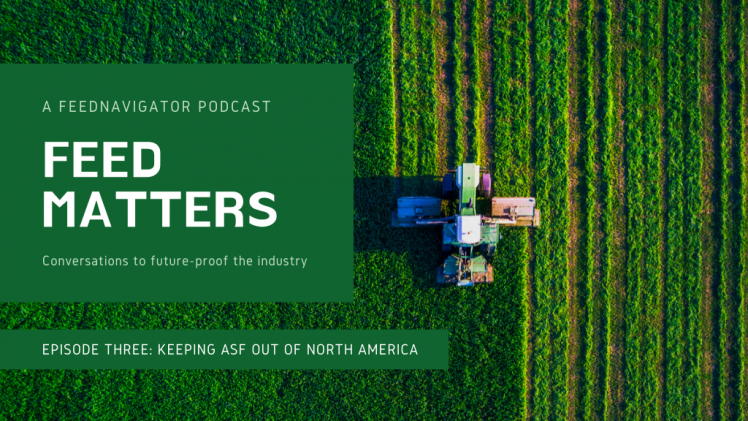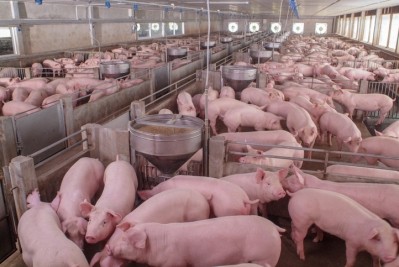Keeping ASF out of North America

Scott Dee, director of research for Pipestone Applied Research with Pipestone Veterinary Services, helped alert the feed industry to the potential danger posed by the presence of disease in contaminated feed with his work on the Porcine Epidemic Virus (PEDV).
That project and follow-up research work found that not only could some swine diseases survive in feed, but they could also remain virulent long enough to weather trans-Atlantic or trans-Pacific transport.
“The genesis of the work was the PED virus entering into the US; it looked like it came from China from the molecular analysis that was done work in 2013,” he told FeedNavigator. “It looked like it came from China, even the Chinese scientists agreed it came from China, and what was unique about it was I think it [affected] about 50% or more of the [US swine] industry – it was very widespread very quickly."
The manner and speed of that virus' movement suggested that feed might have been a vector, he said. Research the group did found the presence of the disease in a feed bin, and that triggered further work looking at the potential for virus transfer from country to country.
Studies to assess the potential for diseases to survive in feed during transport were run, evaluating several diseases. They were carried out in conjunction with researchers at multiple institutions including South Dakota State University, the University of Minnesota and Kansas State University (KSU), Dee said.
Research involving some viruses like ASF as well as foot and mouth disease (FMD) has to be completed in laboratories with specific biosecure facilities, which KSU has the ability to access, he said. However, FMD work is done at the Plum Island Animal Disease Center.
“One thing that’s coming out of all this work is that there is a growing body of evidence showing that feed is a risk, a vehicle for moving these viruses from place to place and it’s not just one or two viruses - it’s multiple ones,” he said.
“There is work [going on] looking at what can be done to kill the viruses or reduce the load,” he added.
Mitigation
Along with several universities, Pipestone is assessing potential mitigants that could be added to feed to halt the spread of a virus or reduce the amount present. That particular project is funded by a federal grant from the Foundation for Food and Agricultural Research (FFAR), swine industry members and interested companies.
About 11 feed additives have been assessed for their mitigation effect on a range of swine diseases, he said. Another batch of products is set to be tested in February.
Data collected from the project is set to be shared with industry members along with researchers at KSU, so the project can be recreated and tested against ASF, Dee said. “We can’t test against ASF in my lab, it’s only a BSL 2.”
The project at KSU is ongoing and additional research is being planned. The products tested include formaldehyde-based products, fatty acids and other compounds, said Dee.
"The mitigations really have a beneficial effect, even in the face of infection."
Another way to potentially stop virus spread is developing a “responsible imports approach,” he said.
“The majority of the large operations in the US have developed a program where when materials enter the US and they’re going to a specific company’s mill, for example, but [first] they go into a holding zone,” he said. “These viruses don’t live in feed forever, at warm temperatures they die out quickly.”
Many industry players have started storing ingredients from China at 68 degrees Fahrenheit (20 Celsius) for about 30 days, Dee said. “It is a scientific way to safely bring in products that are essential to formulate diets for pigs.”
“The third option of control would be some kind of restriction or government-based mandate or control program – that’s what they have in Canada,” he said. “They’ve got a national program where feed from ASF-positive countries, high-risk ingredients, as they’ve classified them, go into storage areas and they sit for a specific time at a specific temperature before they go into [any] milling facilities.”
"The quicker we adopt a national program and the quicker we adapt or expand the mitigation efforts in the country the better off we are going to be.”
In addition to those Canada and the US, industry in Mexico needs to be proactive on this, companies there also need to take preventive measures, he said.















